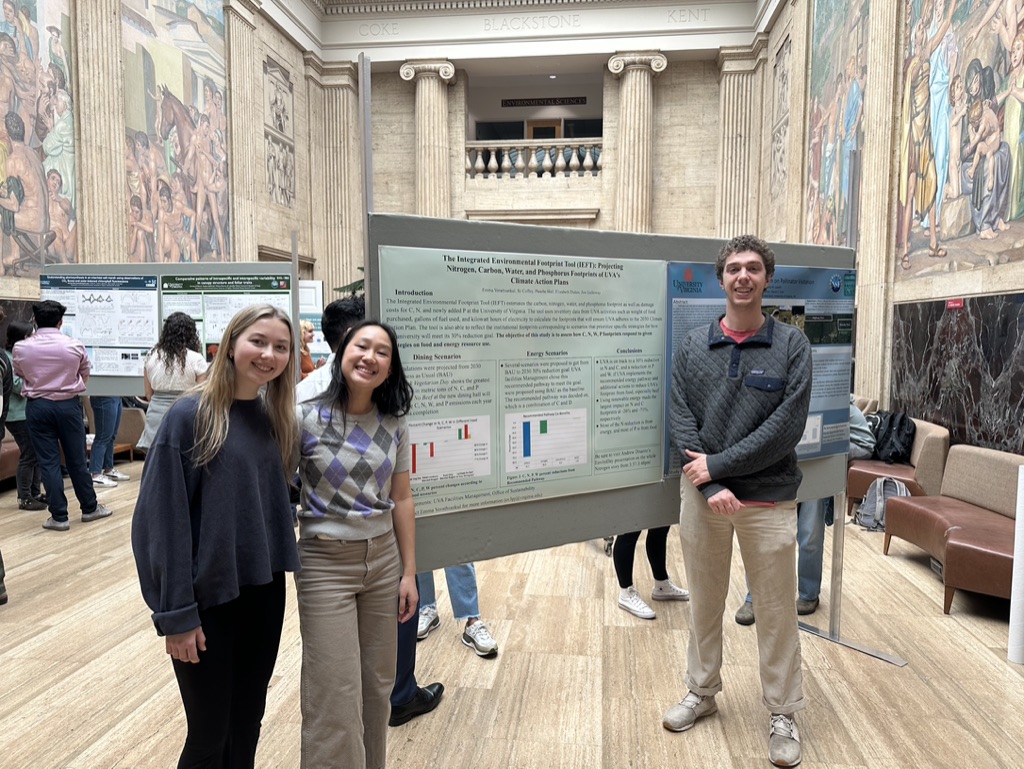Overview
The University of Virginia plans to reduce reactive nitrogen, potable water consumption and waste 30% below 2010 levels, in addition to becoming carbon neutral by 2030. As part of this general strategy of quantifiable sustainability, the Nitrogen Working Group has developed the Integrated Environmental Footprint Tool (IEFT) that estimates the carbon, nitrogen, water, and phosphorus footprint as well as damage costs for carbon, nitrogen, and newly added phosphorus at the University of Virginia. With some adaptation, this tool could be implemented by other institutions. The tool uses inventory data collected by the Nitrogen Working Group and Office for Sustainability from UVA schools and groups detailing activities such as weight of food purchased, gallons of fuel used, and kilowatt hours of electricity. The IEFT team uses the tool to check on nitrogen footprint calculations, then develops plans to reduce the carbon, water, and phosphorus footprints that will ensure UVA adheres to the plan concerning its energy sources, infrastructure, buildings, food, and transportation.
IEFT Projects: Previous projects involving the IEFT have focused on the UVA Dine and Health System food services mainly to reduce the serving of beef and to include more vegetarian options, since meat has the highest nitrogen footprint out of all of the food groups. For example, a proposed scenario is for each dining hall to have a "vegetarian day" once a week where no meat is served. Other scenarios have already been implemented by UVA Dine including a vegetarian station at all dining halls. In addition to the UVA 2030 Action Plan, the IEFT has been utilized to determine the GHG, N and P footprints across community boundaries between Charlottesville City, Albemarle County, and the University that would also contribute to their respective climate action plans.

For more information on the IEFT, feel free to contact IEFT Team Lead Phoebe Hall at deh2rt@virginia.edu